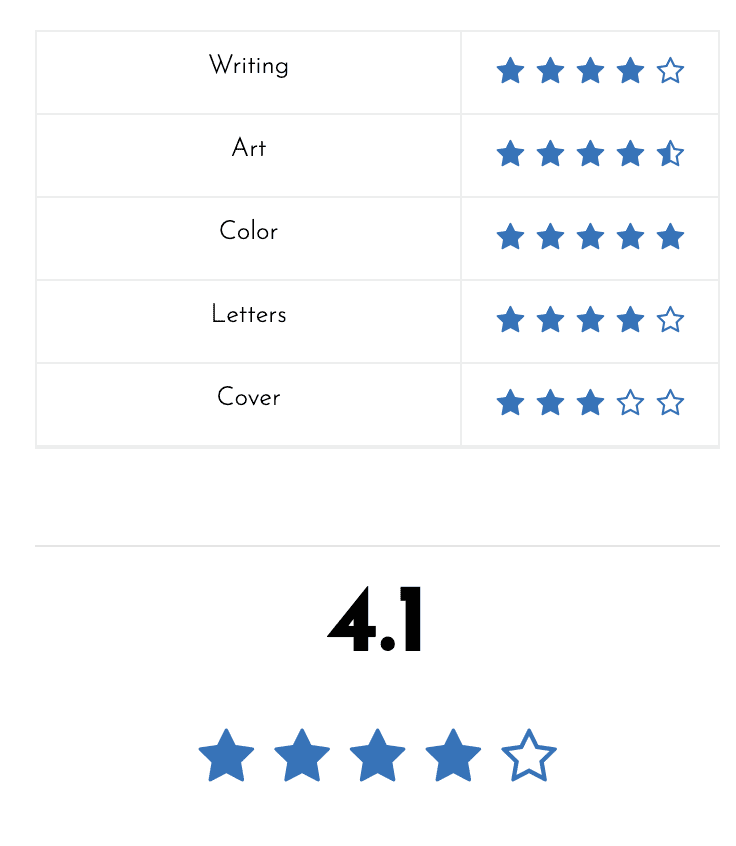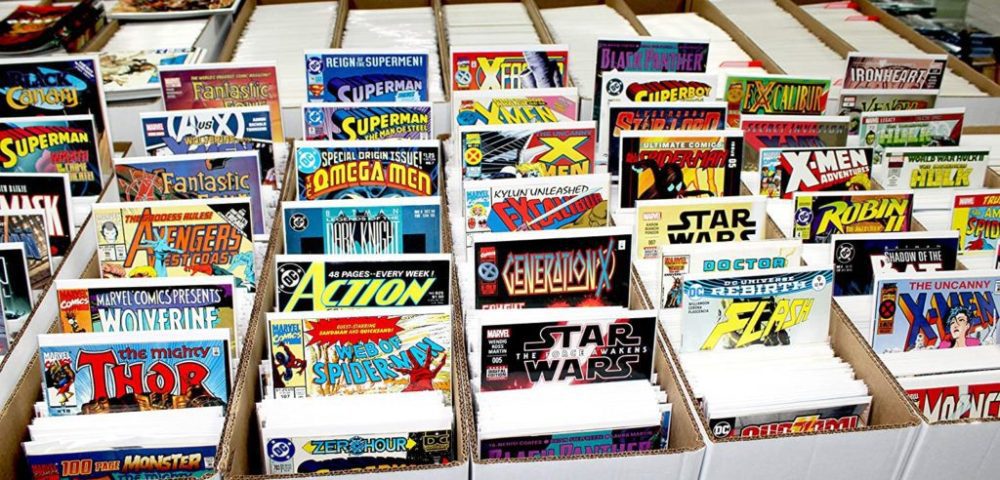The art of reviewing a comic book is hard work, and most reviewers are not professionally trained. However, with the invention of the blog and social media — everyone can be a critic, which is amazing and god awful. Over the past seven years of running Monkeys Fighting Robots, the Editor in Chief and I have developed a five-star system for reviewing books.
5.0 = A near-perfect comic; one of the year’s best. You’ll remember this issue for a long time.
4.0–4.9 = An excellent book that’s well worth your money. It has memorable moments, stunning art, and a fundamental understanding of how comics work.
3.0–3.9 = A pretty good, middle-of-the-road comic. Maybe not worth your money unless you’re a big fan of the series/character.
2.0–2.9 = Meh, it’s okay. Below average. Not terrible, but ultimately forgettable.
1.0–1.9 = It’s bad. Maybe it has one or two redeeming qualities, but the bad outweighs the good. It’s not worth your time, let alone your money.
0.0–0.9 = A terrible, horrible, no good, very bad comic. Not worth your time, let alone your money. You probably shouldn’t bother reviewing the book if this is your score.
I would add one caveat that the rating or grade you give a review should be consistent with your previous reviews. A five-star review should mean something and not be given out at the drop of a hat. Create a list of five comics you believe are perfect, and then judge all other comics against them. But, again, reviewing comics books is an art form, so everything is fluid.
So now that you’ve established a baseline for reviewing a book make sure to review every aspect of the comic, and definitely DO NOT RECAP THE STORY. Talk about the writing and how it made you feel. Make sure to question and break down the pacing of the story. Your review is about a comic book, so the bulk of your review should be about the artwork, panel layout, colors, and letter work. The cover is an essential aspect of a comic too. Did the cover make you want to pick it up off the shelf?
Talk about your favorite page or panel to take your review to the next level. It should be easy to write about, and your reader will notice and feel your passion. Talking about your favorite page will help you focus on panel layout, colors, and how your eye led throughout the page. It should all lead to the question, what does this mean? That question will then lead you back to the book’s writing, and hopefully, you will expand on that section of your review.
A comic book is a fantastic piece of artwork that invokes an emotional response, talk about how the book made you feel! In future installments, I will talk about how to critique the specific elements of a comic book.



